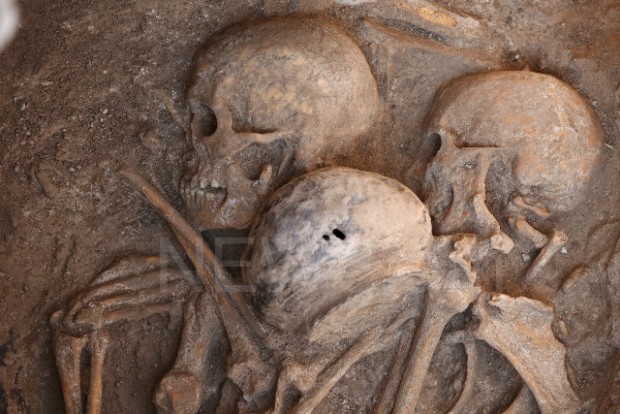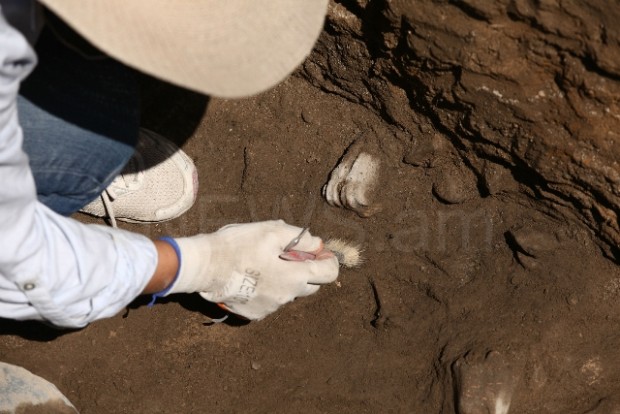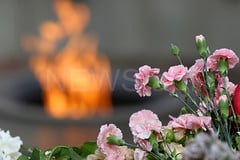An ignorant man can merely overpass this site without understanding what it is in reality. At first sight, it is simply a heap of stones. But for the explanations of a specialist it is hard to imagine that a millennial human history is directly under your foot (photos).
Karashamb is the name of the village, in the surroundings of which the expedition of the Institute of Archaeology and Ethnography of the National Academy of Sciences of Armenia is working for several years. The excavations started here back in the Soviet period. In 1980, late Vahan Hovhannisyan, more known to the current Armenian generation as a political figure, found a burial mound while working as an archaeologist here. A unique encrusted silver bowl dating from 22-21st centuries BC was found in the burial mound. Currently it is exhibited in the History Museum of Armenia. Other utensils, as well as bones of holy cows were also found here, all this proving that there was a developed kingdom here millennia ago.
Archeologist Varduhi Melikyan told Armenian News – NEWS.am that in the 1980s this territory was divided between several entities as allotments. During the initial construction work, archaeological artifacts were found and specialists were invited to the scene.
Later summer cottages were nonetheless constructed, but 3.5 meter ha was left between them, this land currently serving as a unique archaeological monument. During the archaeological work which has been resumed since 2009, the workers of the Institute of Archaeology and Ethnography found a big burial ground disposal here with 776 tombs.
The excavation revealed that people were buried here for over thousand years, from 20th to 7th century BC.
“Our main goal is to explore the burial ritual, which has been subjected to the least changes for centuries. This covered period when there were no written sources. The burial ritual gives us quite a precise idea on the household of people, social construction of the ancient society, demography, as well as their religious perceptions,” Melikyan says.
The tombs in Karashamb are very close to each other: each tomb is surrounded by stones, cromlechs, a flag stone being installed in the center. This can be best seen from footage captured by drone. According to the archaeologist, the big tombs - burial mounds –were not covered by flag stones: they had a wooden covering.
Varduhi Melikyan shows us a recently excavated tomb of late Bronze Age. Two adults and a child are buried in it: this is most likely to be a family. In the burials of that period, the deceased were put on a right or left side, or on their face, with bent hands and legs – like in a mother’s womb. Heads were also buried separately.
The archaeologist will spend several more days to carefully take out all the bones and utensils from this tomb. Thereafter, all this will be recorded and directed to the Institute for further examination.
Frankly speaking, the temptation to go down into the tomb and make a selfie with the millennial bones was quite big; only the fear to damage something stopped the members of our camera crew. However, as it turned out later, the expedition workers themselves have such photos on their Facebook pages.
The specialists hope that after the completion of the excavation this site will be turned into a small reserve with a museum, where the artifacts from tombs will be displayed. They also believe that Karashamb will be included in the tourist trail of Armenia.




























